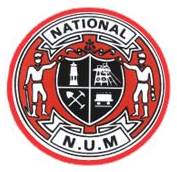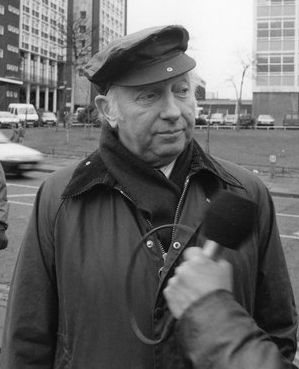Related Research Articles

The National Union of Mineworkers (NUM) is a trade union for coal miners in Great Britain, formed in 1945 from the Miners' Federation of Great Britain (MFGB). The NUM took part in three national miners' strikes, in 1972, 1974 and 1984–85. Following the 1984–85 strike, and the subsequent closure of most of Britain's coal mines, it became a much smaller union. It had around 170,000 members when Arthur Scargill became leader in 1981, a figure which had fallen in 2015 to an active membership of around 100.
The Union of Democratic Mineworkers (UDM) was a British trade union for coal miners based in Nottinghamshire, England, established in 1985, after the 1984–85 miners' strike, when the Nottinghamshire Area of the National Union of Mineworkers was involved in a number of disputes with the National Executive Committee that led to a split from the NUM. In ballots on joining with Nottinghamshire in a new union, the South Derbyshire Area of the NUM voted in favour by 51% and the Colliery Workers and Allied Trades Association by almost 100%.

Michael McGahey was a Scottish miners' leader and Communist. He had a distinctive gravelly voice, and described himself as "a product of my class and my movement".
The Miners' Federation of Great Britain (MFGB) was established after a meeting of local mining trade unions in Newport, Wales in 1888. The federation was formed to represent and co-ordinate the affairs of local and regional miners' unions in England, Scotland and Wales whose associations remained largely autonomous. At its peak, the federation represented nearly one million workers. It was reorganised into the National Union of Mineworkers in 1945.

The South Wales Miners' Federation (SWMF), nicknamed "The Fed", was a trade union for coal miners in South Wales. It survives as the South Wales Area of the National Union of Mineworkers.
Lawrence Daly was a coal miner, trade unionist and political activist.

The National Union of Scottish Mineworkers (NUSW) is a trade union in Scotland, founded in 1894 as the Scottish Miners Federation. It joined the Miners' Federation of Great Britain, and in 1914 changed its name to National Union of Scottish Mineworkers. It survives as the National Union of Mineworkers.

The Nottinghamshire Miners' Association was a trade union representing coal miners in Nottinghamshire, England.

The Leicestershire Miners' Association was a trade union in the United Kingdom.

Arthur Scargill is a British trade unionist who was President of the National Union of Mineworkers (NUM) from 1982 to 2002. He is best known for leading the UK miners' strike (1984–85), a major event in the history of the British labour movement.
Steve Kemp is a British trade unionist.
The Fife and Kinross Miners' Association was a coal miners' trade union based in Fife and Kinross-shire in Scotland.
Andrew Sharp was a British trade unionist.

Abraham Moffat was a Scottish trade unionist and communist activist. He was elected repeatedly to high office in the trade unions and represented the union on government coal boards. He held major union offices: President of the National Union of Scottish Mine Workers; member of the executive committee of the Miners' Federation of Great Britain; Vice-chairman Scottish Regional Coal Board; and member National Coal Board. He served as president of the union from 1942 to his retirement in 1961, when he was succeeded by his younger brother Alex Moffat, also an activist.

The Somerset Miners' Association or Somersetshire Miners' Association was a coal mining trade union based in the Somerset coalfield, Somerset, England.
The UK miners' strike of 1969 was an unofficial strike that involved 140 of the 307 collieries owned by the National Coal Board, including all collieries in the Yorkshire area. The strike began on 13 October 1969 and lasted for roughly two weeks, with some pits returning to work before others. The NCB lost £15 million and 2.5 million tonnes of coal as a result of the strike.
The Warwickshire Miners' Association was a trade union representing coal miners in the Warwickshire area of England.
Edward Jones was a Welsh trade union leader.
This article is about the sponsorship of British Members of Parliament by mining trade unions.
The Old Hill and Highley District Miners', Enginemen's and Surfacemen's Association, usually known as the Old Hill Miners' Association, was a trade union representing mineworkers in the Old Hill district of the West Midlands, in England.
References
- ↑ Arthur Marsh and Victoria Ryan, Historical Directory of Trade Unions Vol. 2, p.198
- ↑ Robert Page Arnot, The Miners: 1889-1910, p.373
- ↑ Duncan Tanner, Political Change and the Labour Party 1900-1918, p.202
- ↑ "West Cumberland Miners' Association: Grand Picnic And Demonstration At Maryport, Yesterday", Whitehaven News, 3 July 1873
- ↑ Annual Conference 1972, National Union of Mineworkers, p.64
- ↑ Martin Adeney and John Lloyd, The Miner's Strike 1984-85, p.268